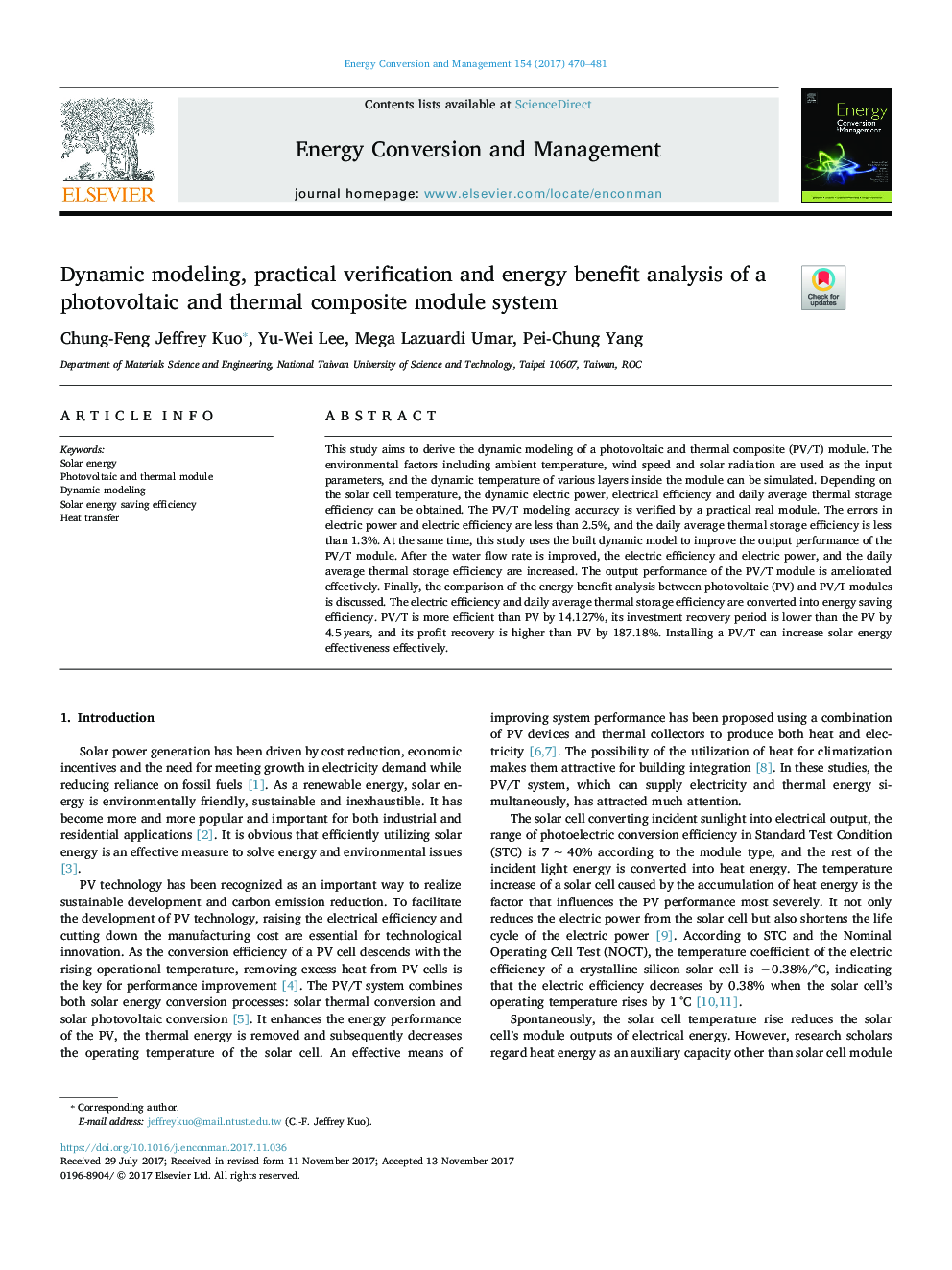| Article ID | Journal | Published Year | Pages | File Type |
|---|---|---|---|---|
| 7159592 | Energy Conversion and Management | 2017 | 12 Pages |
Abstract
This study aims to derive the dynamic modeling of a photovoltaic and thermal composite (PV/T) module. The environmental factors including ambient temperature, wind speed and solar radiation are used as the input parameters, and the dynamic temperature of various layers inside the module can be simulated. Depending on the solar cell temperature, the dynamic electric power, electrical efficiency and daily average thermal storage efficiency can be obtained. The PV/T modeling accuracy is verified by a practical real module. The errors in electric power and electric efficiency are less than 2.5%, and the daily average thermal storage efficiency is less than 1.3%. At the same time, this study uses the built dynamic model to improve the output performance of the PV/T module. After the water flow rate is improved, the electric efficiency and electric power, and the daily average thermal storage efficiency are increased. The output performance of the PV/T module is ameliorated effectively. Finally, the comparison of the energy benefit analysis between photovoltaic (PV) and PV/T modules is discussed. The electric efficiency and daily average thermal storage efficiency are converted into energy saving efficiency. PV/T is more efficient than PV by 14.127%, its investment recovery period is lower than the PV by 4.5â¯years, and its profit recovery is higher than PV by 187.18%. Installing a PV/T can increase solar energy effectiveness effectively.
Related Topics
Physical Sciences and Engineering
Energy
Energy (General)
Authors
Chung-Feng Jeffrey Kuo, Yu-Wei Lee, Mega Lazuardi Umar, Pei-Chung Yang,
